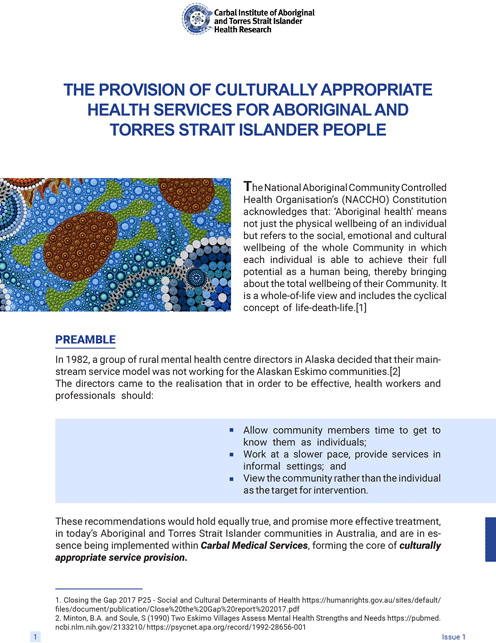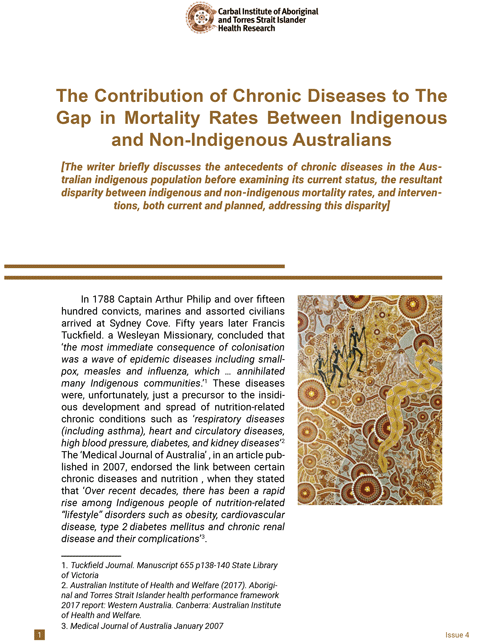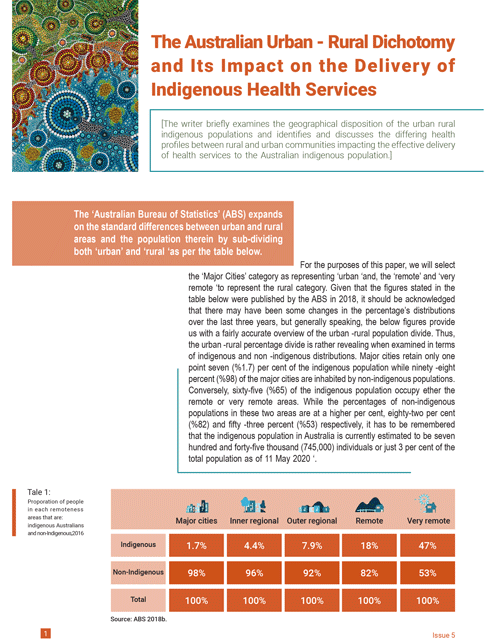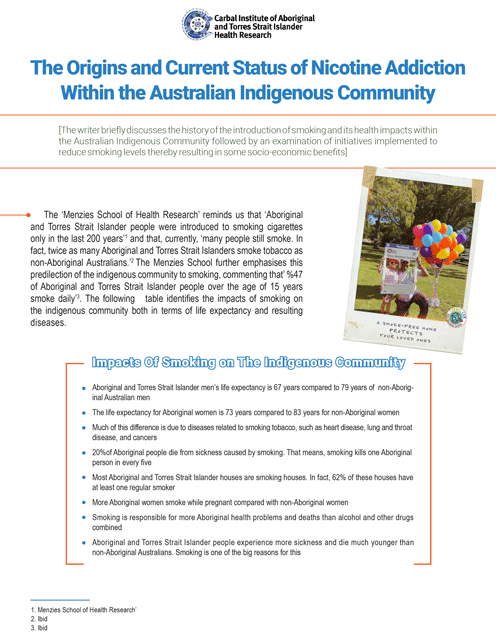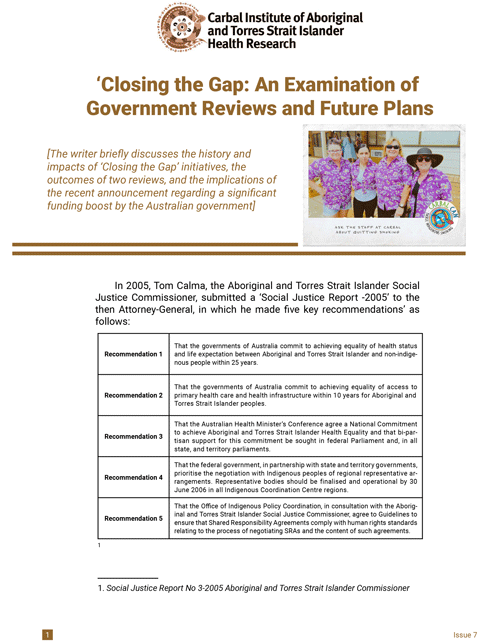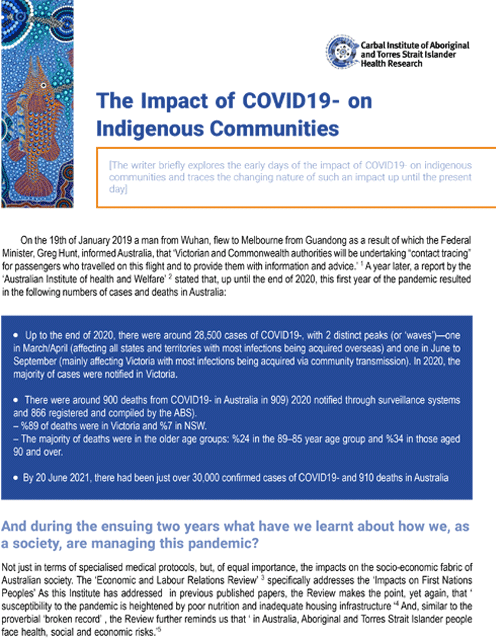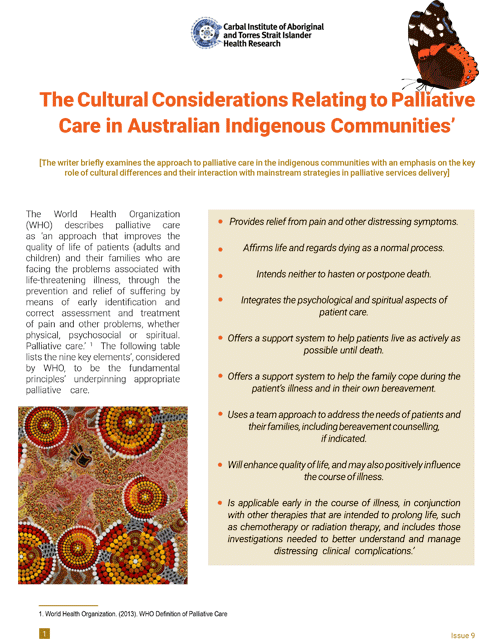Carbal Research
Research Resources
The Provision of Culturally-Appropriate Health Services for Aboriginal and Torres Strait Islander People
In 1982, a group of rural mental health centre directors in Alaska decided that their mainstream service model was not working for the Alaskan Eskimo communities.
The directors came to the realisation that in order to be effective, health workers and professionals should:
- Allow community members time to get to know them as individuals;
- Work at a slower pace, provide services in informal settings; and
- View the community rather than the individual as the target for intervention.
These recommendations would hold equally true, and promise more effective treatment, in today’s Aboriginal and Torres Strait Islander communities in Australia, and are in essence being implemented within Carbal Medical Services, forming the core of culturally appropriate service provision.
Culturally-Appropriate Maternal Health Care
In Australia, despite being a developed country, statistics show significant disparities between indigenous and non-indigenous women in terms of health outcomes for mothers and newborns. Of crucial importance to improving these outcomes are both an increase in coverage and accessibility and a much-enhanced quality of care provided to women through health facilities, birth attendants or otherwise during pregnancy, childbirth and post-partum.
Research shows that to safeguard pregnancy and childbirth, all pregnant women and newborns need to have access to skilled care consisting of evidence-based practices delivered in a humane, respectful, safe and supportive environment (Tunçalp et al., 2015). But the utilisation of skilled care, even when available, is heavily dependent on how safe and culturally appropriate it is deemed by the recipient. Thus, it is paramount to ensure that a woman’s cultural background and setting are not only taken into consideration but form an intrinsic part of the care being provided.
The Key Elements Underpinning the Development of Indigenous Health Provision Within Australia
The writer provides an overview of both evidence and research-based findings whereby the key elements’, which should underpin the development and operations of indigenous medical seravices providers, are identified and elaborated upon.
The connectivity between indigenous and mainstream medical services providers is also briefly examined concluding with Queensland’s health services’ stated commitment to both developing and implementing these pre-identified key elements.
The Contribution of Chronic Diseases to the Gap in Mortality Rates Between Indigenous and Non-Indigenous Australians
The writer briefly discusses the antecedents of chronic diseases in the Australian indigenous population before examining its current status, the resultant disparity between indigenous and non-indigenous mortality rates, and interventions, both current and planned, addressing this disparity.
The Australian Urban/Rural Dichotomy and its Impact on the Delivery of Indigenous Health Services
The writer briefly examines the geographical disposition of the urban rural indigenous populations and identifies and discusses the differing health profiles between rural and urban communities impacting the effective delivery of health services to the Australian indigenous population.
The Origins and Current Status of Nicotine Addiction Within the Australian Indigenous Community
The writer briefly discusses the history of the introduction of smoking and its health impacts within the Australian Indigenous Community followed by an examination of initiatives implemented to reduce smoking levels thereby resulting in some socio-economic benefits.
Closing the Gap: An Examination of Government Reviews and Future Plans
The writer briefly discusses the history and impacts of ‘Closing the Gap’ initiatives, the outcomes of two reviews, and the implications of the recent announcement regarding a significant funding boost by the Australian government.
The Impact of COVID-19 on Indigenous Communities
The writer briefly explores the early days of the impact of COVID19- on indigenous communities and traces the changing nature of such an impact up until the present day.
The Cultural Considerations Relating to Palliative Care in Australian Indigenous Communities
The writer briefly examines the approach to palliative care in the indigenous communities with an emphasis on the key role of cultural differences and their interaction with mainstream strategies in palliative services delivery.

